12 start with B start with B
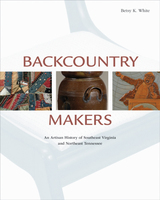
Beautifully illustrated with some 230 photographs, most of them in color, this volume includes biographical sketches of seventy-five makers—potters, weavers, spinners, quilters, embroiderers, cabinetmakers, metalsmiths, clocksmiths, gunsmiths, and artists—who worked in the region from the earliest eighteenth-century settlement days to the late twentieth century. The entry for each artisan is accompanied by one or more images of a signed or marked work, or, in a number of instances, an unmarked work with certain provenance.
These vignettes offer a fascinating glimpse of the people behind the various pieces, describing their background, family life, and where they learned their trade. Using census records and other documentary evidence, White has traced the earliest of these artisans from their origins in such places as Europe and Philadelphia down through the Great Valley of Virginia to their ultimate destinations in southwest Virginia and northeast Tennessee. Along with the photos displaying the products of their craftsmanship, the book also includes a number of evocative images of the artists and their homes and towns, thus giving the reader a fuller sense of the region where these gifted people lived and worked.
One of the few studies to addresses handmade objects in this locale—and one of the even fewer works to focus on the artisans
themselves— Backcountry Makers will be of great value not only to scholars of material culture and the arts in Appalachia but also to those who collect regional antiques and crafts and want to know more about the individuals who made them.
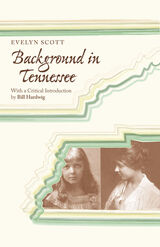
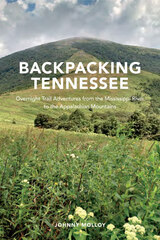
“The reason I travel and explore the outdoors is simple,” writes Johnny Molloy, “the world is a beautiful place!” And Molloy would know: he has backpacked more than 2,500 nights in forty states. It is this experience—much of it garnered in his home state of Tennessee—combined with his extensive production of guidebooks spanning activities from hiking and camping to paddling and bicycling, that enabled him to produce Backpacking Tennessee: Overnight Trail Adventures from the Mississippi River to the Appalachian Mountains.
Complete with directions, distances, descriptions, and maps, Backpacking Tennessee is divided into four sections that together outline forty overnight hikes across West Tennessee, Middle Tennessee, the Cumberland Plateau, and East Tennessee and the Appalachian Mountains. The trails Molloy has chosen to highlight are a mix of well-known hikes and lesser-known areas, ranging in distance and difficulty for both novice hikers and experienced backpackers. Woven throughout the trail descriptions are comments on scenery, notes about safety, and historical information that help readers get a true feel for each hike. To round out his comprehensive guide, Molloy also includes ratings, 1–5, on the family- and dog-friendliness of each trail—an especially helpful feature for readers bringing loved ones along.
From the Great Smoky Mountains National Park and Cherokee National Forest to Big South Fork and Land Between the Lakes, Tennessee offers thousands of miles of trails for adventurers looking to explore. For budding outdoor enthusiasts and experienced backpackers alike, Backpacking Tennessee answers the timeless question: where do we go next?
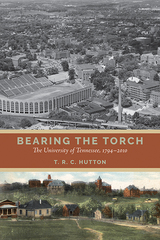
Bearing the Torch stands as a comprehensive history of the University of Tennessee, replete with anecdotes and vignettes of interest to anyone interested in UT, from the administrators and chancellors to students and alums, and even to the Vols fans whose familiarity with the school comes mainly from the sports page. It is also a biography of a school whose history reflects that of its state and its nation. The institution that began as Blount College in 1794 in a frontier village called Knoxville exemplifies the relationship between education and American history.
This is the first scholarly history of UT since 1984. T. R. C. Hutton not only provides a much-needed update, but also seeks to present a social history of the university, fully integrating historical context and showing how the volume’s central “character”—the university itself—reflects historical themes and concerns. For example, Hutton shows how the school’s development was hampered in the early nineteenth century by stingy state funding (a theme that also appears in subsequent decades) and Jacksonian fears that publicly funded higher education equaled elite privilege. The institution nearly disappeared as the Civil War raged in a divided region, but then it flourished thanks to policies that never could have happened without the war. In the twentieth century, students embraced dramatic social changes as the university wrestled with race, gender, and other important issues. In the Cold War era, UT became a successful research institution and entered into a deep partnership with Oak Ridge National Laboratories that persists to this day. All the while UT athletics experienced the highs of national championships and the lows of lawsuits and losing seasons. UT is a university with a universe of historical experiences.
The University of Tennessee’s story has always been defined by inclusion and exclusion, and the school has triumphed when it practiced the former and failed when it took part in the latter. Bearing the Torch traces that ongoing process, richly detailing the University’s contributions to what one president, Joseph Estabrook, called the “diffusion of knowledge among the people.”
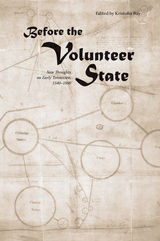
The essays are divided into two parts—the first focusing on the establishment and geopolitical complexities of seventeenth- and early-eighteenth-century life in and around the Tennessee River, and the second exploring the effects of the American Revolution in this geopolitical space. Topics in Part One include Indian life in the late Mississippian era, how contact with Europeans forced a process of migration and change, European understanding of Cherokee strength, and the importance of the Creeks, Cherokees, and Shawnees to early Tennessee history. Part Two offers articles about the confusing milieu into which the region was thrown during the Revolution, the central role of kinship networks for both Indians and whites, and the difficulties of identity formation as Euro-Americans expanded their presence on the Tennessee frontier. The work concludes by addressing the issue of myth and memory and how early Tennessee history was overtaken by nineteenth-century historical narratives that continue to serve as the foundation for understanding the state.
Taken together, these essays provide a gateway through which to reimagine early Tennessee history—a reimagining that demonstrates the significance of the Volunteer State within broader trends in early modern, southern, trans-Appalachian, and Atlantic World history.

Apparently, slumber parties in the mid-South 1970s were plied with a strange ritual. At midnight attendees would gather before a mirror and chant “I don’t believe in the Bell Witch” three times to see if the legendary spook would appear alongside their own reflections—a practice that echoes the “Bloody Mary” pattern following the execution of Mary Queen of Scots centuries ago. But that small circuit of preteen gatherings was neither the beginning nor the end of the Bell Witch’s travels. Indeed, the legend of the haint who terrorized the Bell family of Adams, Tennessee, is one of the best-known pieces of folklore in American storytelling—featured around the globe in popular-culture references as varied as a 1930s radio skit and a 1980s song from a Danish heavy metal band. Legend has it that “Old Kate” was investigated even by the likes of future president Andrew Jackson, who was reported to have said, “I would rather fight the British ten times over than to ever face the Bell Witch again.”
While dozens of books and articles have thoroughly analyzed this intriguing tale, this book breaks new ground by exploring the oral traditions associated with the poltergeist and demonstrating her regional, national, and even international sweep. Author Rick Gregory details the ways the narrative mirrors other legends with similar themes and examines the modern proliferation of the story via contemporary digital media. The Bell Witch in Myth and Memory ultimately explores what people believe and why they believe what they cannot explicitly prove—and, more particularly, why for two hundred years so many have sworn by the reality of the Bell Witch. In this highly engaging study, Rick Gregory not only sheds light on Tennessee’s vibrant oral history tradition but also provides insight into the enduring, worldwide phenomenon that is folklore.
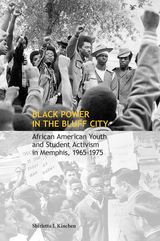
While Black Power activism on the coasts and in the Midwest has attracted considerable scholarly attention, much less has been written about the movement’s impact outside these hotbeds. In Black Power in the Bluff City, Shirletta J. Kinchen helps redress that imbalance by examining how young Memphis activists, like Coby Smith and Charles Cabbage, dissatisfied by the pace of progress in a city emerging from the Jim Crow era, embraced Black Power ideology to confront such challenges as gross disparities in housing, education, and employment as well as police brutality and harassment. Two closely related Black Power organizations, the Black Organizing Project and the Invaders, became central to the local black youth movement in the late 1960s. Kinchen traces these groups’ participation in the 1968 sanitation workers’ strike—including the controversy over whether their activities precipitated events that culminated in Martin Luther King’s assassination—and their subsequent involvement in War on Poverty programs. The book also shows how Black Power ideology drove activism at the historically black LeMoyne-Owen College, scene of a 1968 administration-building takeover, and at the predominately white Memphis State University, where African American students transformed the campus by creating parallel institutions that helped strengthen black student camaraderie and consciousness in the face of marginalization.
Drawing on interviews with activists, FBI files, newspaper accounts from the period, and many other sources, the author persuasively shows not only how an emerging generation helped define the black freedom struggle in Memphis but also how they applied the tenets of Black Power to shape the broader community.

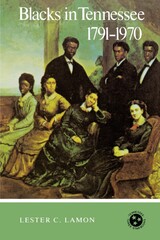
While black men and women have played important roles in Tennessee’s growth and history; slavery, caste, and segregation have forced them to live apart and to create a separate history. In this historical analysis, Lester Lamon offers an understanding of the history of black Tennesseans, recognizing that they have been both a part of and apart from the developments affecting the dominant white population of the state. The different economic priorities, political loyalties, and racial populations evident in the three “Grand Divisions” of the state have created superficial differences in the historical experiences of blacks in the three regions. Intrastate competition has reinforced these sectional differences, but a common factor found in the black experience has been a racial “givenness”—the idea that blacks should not expect equality or free association with whites. Tennessee’s black history is not one of a surrender to racial pressure, but, instead, is a story of courage, sacrifice, frustration, and dreams of freedom, equality, and respect for human dignity.
Blacks in Tennessee provides a necessary and culturally enriching addition to the traditional history of the state.
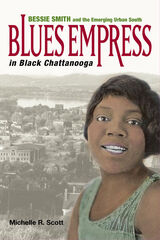
As one of the first African American vocalists to be recorded, Bessie Smith is a prominent figure in American popular culture and African American history. Michelle R. Scott uses Smith's life as a lens to investigate broad issues in history, including industrialization, Southern rural to urban migration, black community development in the post-emancipation era, and black working-class gender conventions.
Arguing that the rise of blues culture and the success of female blues artists like Bessie Smith are connected to the rapid migration and industrialization in the late nineteenth and early twentieth centuries, Scott focuses her analysis on Chattanooga, Tennessee, the large industrial and transportation center where Smith was born. This study explores how the expansion of the Southern railroads and the development of iron foundries, steel mills, and sawmills created vast employment opportunities in the postbellum era. Chronicling the growth and development of the African American Chattanooga community, Scott examines the Smith family's migration to Chattanooga and the popular music of black Chattanooga during the first decade of the twentieth century, and culminates by delving into Smith's early years on the vaudeville circuit.
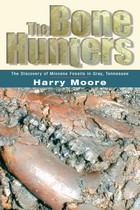
The Bone Hunters recounts the fascinating details of a remarkable chance discovery. In his engaging firsthand account, Moore writes of the people behind the excavation of the site and how their efforts helped save valuable artifacts for ongoing study. Numerous photographs capture the excellent condition of fossils at Gray. Moore also describes the contours of what the ancient landscape may have looked like and details the governmental action that ultimately preserved this Tennessee treasure.
Harry Moore manages the Tennessee Department of Transportation’s Geotechnial Engineering office in Knoxville. His previous books are A Roadside Guide to the Geology of the Great Smoky Mountains National Park, A Geologic Trip Across Tennessee by Interstate 40, and Discovering October Roads: Fall Colors and Geology in Rural East Tennessee (co-written with Fred Brown).

What effect have twenty-five years of school desegregation had on Nashville? Richard A. Pride and J. David Woodard evaluate the city’s efforts at integration and systematically examine the crucial issues involved. They argue that the controversy has little to do with costs, bus routes, or achievement test scores. Instead, they claim, it strikes at fundamental cultural issues.
Nashville’s white citizens, the authors observe, resisted busing from the beginning. After nine years’ experience, blacks had become equally hostile to the notion, arguing that they, and they alone, bore the burden. Their schools had been closed, their offspring had had to travel farther for instruction, and their institutions and culture had been disrupted. Blacks rejected assimilation, demanding schools in their neighborhoods in which their children would predominate and would be supervised and taught by people of their own race.
A federal judge heard the case. He agreed that the costs of the experiment had outweighed the benefits. In 1980, in the first such decision made in the nation, he ordered an end to busing. His opinion explained his concern that busing was creating two school systems – one private, white, and middle class, one public, black, and poor. The legal impact of the case was blunted when, on appeal, the Sixth Circuit Court ordered busing be re-established in Nashville.
READERS
Browse our collection.
PUBLISHERS
See BiblioVault's publisher services.
STUDENT SERVICES
Files for college accessibility offices.
UChicago Accessibility Resources
home | accessibility | search | about | contact us
BiblioVault ® 2001 - 2024
The University of Chicago Press









